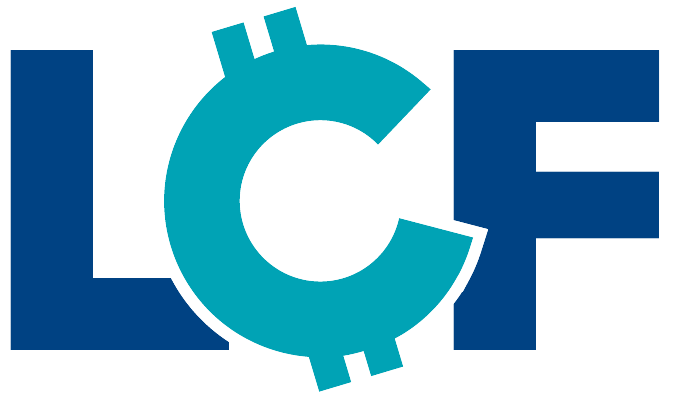Apply Now For Business Funding
What Type of Business Loans and Alternative Financing are Available for Home-Based Businesses?
There are several types of funding that you can consider for funding your home-based business, including:
Small Business Administration (SBA) Loans: The SBA offers several loan programs that can help you finance your home-based business. These include the 7(a) loan program, which is the most popular SBA loan program, and the SBA Microloan program, which provides small loans to very small businesses and certain non-profit organizations.
Personal Loans: You can also consider taking out a personal loan to finance your home-based business. Personal loans are typically unsecured and have a fixed interest rate. They can be used for a variety of purposes, including starting a business.
Home Equity Loans: If you have equity in your home, you can consider taking out a home equity loan. This type of loan allows you to borrow against the equity in your home to finance your business.
Crowdfunding: Crowdfunding is a newer way to raise money for your business. With crowdfunding, you can raise money from a large number of people through an online platform.
Business Line of Credit: A business line of credit can provide you with a source of flexible funding for your home-based business. You can use it when you need it and only pay interest on the amount you borrow.
It’s important to do your research and carefully consider the terms and conditions of any loan you are considering before applying. You should also consult with a financial advisor or accountant to ensure that you are making the best decision for your specific business needs.
What is a Home-Based Business?
A home-based business is a type of business that operates primarily from the owner’s home. This can include a variety of businesses, such as freelance consulting, selling products online, or providing services like pet-sitting or home cleaning. Home-based businesses can be owned and operated by an individual or a small team, and they can range from sole proprietorships to limited liability companies (LLCs).
Some of the benefits of a home-based business include lower overhead costs, flexibility in scheduling, and the ability to work from anywhere with an internet connection. However, there are also some challenges to operating a business from home, such as separating work and personal life, dealing with distractions, and maintaining a professional image.
If you are considering starting a home-based business, it’s important to research and understand the legal requirements in your area, as well as to develop a comprehensive business plan that includes marketing, financing, and operational strategies. Additionally, it’s important to have a dedicated workspace, set clear boundaries with family and friends, and establish systems for tracking income and expenses.
Application Process for Home-Based Business Financing
Eligibility requirements for a small business loan will vary based on the type of financing you are seeking. Entrepreneurs have many funding options based on industry type and loan amounts. It’s important to know where to look for the right type of business lenders to fit your business needs.
For example, if you have bad credit, you will likely be limited to certain types of loan programs. If your business is a startup or new business, you may also have a limited number of small business financing options. Other factors typically include: annual revenue, time in business and business experience.
Here is a general guide on how to apply for a loan for your home-based business:
Prepare your financial statements: Gather financial statements for your business, including profit and loss statements, balance sheets, and cash flow statements. This information will help lenders understand your business’s financial health and ability to repay a loan.
Determine your loan needs: Decide how much money you need to borrow and what you will use the funds for. This will help you select the right type of loan and ensure you apply for an amount that is appropriate for your business.
Choose a lender: Research different lenders, including banks, credit unions, and online lenders, to find one that fits your needs. Look for a lender that specializes in loans for small businesses and compare the interest rates and repayment terms offered by different lenders.
Complete a loan application: Fill out a loan application and provide the lender with the information and documentation they need, such as your financial statements, tax returns, and business plan.
Provide collateral: Some lenders may require collateral, such as equipment or real estate, to secure the loan. If you are unable to provide collateral, consider finding a co-signer or looking for a loan that does not require collateral.
Wait for approval: Once you submit your loan application, the lender will review it and make a decision on whether to approve the loan. This process can take several weeks, so be patient.
Review and sign the loan agreement: If your loan is approved, the lender will provide you with a loan agreement that outlines the terms and conditions of the loan. Carefully review the agreement and make sure you understand all the terms before signing.
It’s important to remember that the loan application process can take time and require a significant amount of documentation, so be prepared and plan accordingly. Additionally, having a well-prepared business plan and a solid financial history can help increase your chances of being approved for a loan.
What Paperwork is Usually Required for a Loan Application?
The exact paperwork required for a business loan will depend on the specific loan and the lender, but some common documents that may be required include:
Business plan: This should include a detailed description of your business, including your products or services, target market, and financial projections.
Financial statements: This may include: business bank account statements balance sheets, income statements, and cash flow projections, as well as personal tax returns for business owners.
Proof of ownership: This may include articles of incorporation, business licenses, and other documentation demonstrating that you have the right to operate the business.
Collateral: Depending on the loan and the lender, you may be required to provide collateral such as real estate, equipment, or inventory to secure the loan.
Personal guarantee: Many business loans require a personal guarantee from the owners of the business, which means that they are personally responsible for repaying the loan if the business is unable to do so.
Other documents: Depending on the loan, the lender may require additional documentation such as bank statements, references, or proof of insurance.
It’s a good idea to carefully review the requirements and terms of a loan before applying, and to work with a financial advisor or loan officer to ensure that you have all of the necessary documents and information to support your loan application.
How Your Personal Credit Score is Calculated
A credit score is a numerical representation of your creditworthiness based on information in your credit report. It is used by lenders to determine the likelihood that you will repay a loan or credit card debt. The most widely used credit score is the FICO score, which ranges from 300 to 850. Here’s how a FICO score is calculated:
Payment History (35%): This category looks at your track record of paying your bills on time. Late or missed payments can have a negative impact on your credit score.
Amounts Owed (30%): This category evaluates the amount of debt you have, including the amount of your credit card balances, car loans, and other loans. A high debt-to-credit ratio can hurt your credit score.
Length of Credit History (15%): This category looks at how long you’ve had credit accounts and how long it has been since you used them. A long history of using credit responsibly can positively impact your credit score.
New Credit (10%): This category evaluates how many new credit accounts you’ve opened recently, as well as how many recent credit inquiries you have. Too many new credit accounts or inquiries can lower your credit score.
Types of Credit Used (10%): This category looks at the mix of credit you have, such as credit cards, retail accounts, loans, and mortgages. Having a healthy mix of different types of credit can benefit your credit score.
It’s important to keep in mind that there is no single formula for calculating a credit score, and different credit bureaus may have slightly different methods for calculating your score. However, understanding the factors that contribute to your credit score can help you take steps to improve it over time.
How Business Credit is Calculated
Business credit is determined by evaluating a company’s financial history and ability to repay debts. There are several factors that can impact a business’s credit, including:
Payment history: This refers to a business’s track record of paying bills on time. Late or missed payments can have a negative impact on a business’s credit.
Credit utilization: This refers to the amount of credit a business is using relative to the amount of credit available to them. High credit utilization can indicate a higher risk of default and lower creditworthiness.
Credit mix: This refers to the different types of credit a business has, such as lines of credit, term loans, and credit cards. Having a mix of different types of credit can demonstrate a company’s ability to manage different types of debt.
Length of credit history: This refers to the length of time a business has been using credit. A longer credit history can demonstrate stability and help build a strong credit score.
Public records: This refers to public records such as bankruptcies, foreclosures, and tax liens. These records can have a negative impact on a business’s credit.
Business credit is typically evaluated by credit reporting agencies, such as Experian, Equifax, and Dun & Bradstreet, which maintain records of a company’s credit history and generate credit reports based on the information they have.
It’s important for businesses to manage their credit wisely and maintain a strong credit score, as a good credit score can make it easier for a business to obtain financing and secure favorable terms on loans and other forms of credit.
A Closer Look at Small Business Loans & Alternative Loan Options
US Small Business Administration (SBA Loans)
-
The SBA 7(a) loan is a type of loan offered by the Small Business Administration (SBA) to help small businesses access capital. The SBA 7(a) loan program is the most popular and flexible loan program offered by the SBA, and it provides businesses with financing for a variety of purposes, including starting a business, buying an existing business, expanding a business, and refinancing existing debt.
SBA 7(a) loans are made through approved lending institutions, such as banks and credit unions, and the SBA provides a guarantee to the lender for a portion of the loan. This guarantee helps to reduce the risk to the lender and makes it more likely that small businesses will be approved for a loan.
The terms of an SBA 7(a) loan can vary depending on the specific loan and the lender, but typically they have a repayment term of up to 10 years for working capital and up to 25 years for real estate purchases. The interest rates on SBA 7(a) loans are typically higher than those for traditional bank loans, but lower than those for alternative lenders, and the SBA requires a personal guarantee from the owners of the business.
If you are interested in applying for an SBA 7(a) loan, it is a good idea to consult with a financial advisor or an SBA-approved lender to determine if it is the right financing option for your business and to learn more about the requirements and terms of the loan.
-
SBA Microloans are a type of loan offered by the Small Business Administration (SBA) to help small businesses access capital. These loans are designed for businesses that need a small amount of financing and may have difficulty obtaining a traditional loan from a bank or other lender.
SBA Microloans are typically made by intermediary lending organizations, such as community-based organizations, non-profit organizations, and community development corporations. These organizations provide loans to small businesses up to $50,000 and offer technical assistance and training to help businesses succeed.
SBA Microloans can be used for a variety of purposes, including starting a business, purchasing inventory or supplies, purchasing or improving equipment, or working capital. The terms of the loan, including the interest rate, repayment period, and fees, will vary depending on the specific loan and the lending organization.
If you are interested in applying for an SBA Microloan, it is a good idea to research and compare different lending organizations to find one that fits your needs and to learn more about the requirements and terms of the loan. Additionally, you may need to provide a business plan, financial statements, and other documentation to the lending organization as part of the loan application process.
-
Disaster Loans – A disaster loan is a type of loan provided by the Small Business Administration (SBA) to help businesses and individuals recover from the economic impact of a declared disaster. The SBA provides disaster loans to help businesses and individuals repair or replace damaged or destroyed real estate, personal property, machinery and equipment, and inventory.
Disaster loans are typically offered to businesses and individuals who are unable to obtain sufficient disaster recovery assistance from insurance or other sources. The SBA offers both physical disaster loans, which are designed to help businesses and individuals repair or replace damaged property, and economic injury disaster loans, which are designed to help businesses recover from the economic impact of a disaster.
Disaster loans are available to businesses of all sizes, as well as private non-profit organizations and individuals who have been impacted by a declared disaster. The terms of a disaster loan may vary based on the specific disaster and the needs of the borrower, but typically include a low interest rate, a long repayment period, and favorable terms and conditions.
It’s important for businesses and individuals to be proactive in preparing for a disaster and to familiarize themselves with the disaster loan process and requirements in advance, so that they are prepared in the event of a disaster.
Business Credit Cards
Getting a business credit card is a straightforward process, but you’ll need to follow some steps and gather some information:
-
Determine your business’s creditworthiness: Lenders will evaluate your business’s credit history and financial stability to determine whether you qualify for a credit card. You can check your business’s credit report to see if there are any errors or negative marks that could impact your ability to get a card.
-
Choose a card: There are many different business credit cards available, each with its own rewards, fees, and interest rates. Compare different options to find the one that best fits your business’s needs.
-
Complete an application: You can apply for a business credit card online, over the phone, or in person. You’ll typically need to provide information about your business, including its legal name, tax ID number, and financial information.
-
Provide additional documentation: Depending on the card issuer and the type of business you have, you may need to provide additional documentation, such as a business plan or financial statements.
-
Wait for approval: Once you’ve submitted your application, the card issuer will review your information and determine whether you qualify for the card. You should receive a decision within a few business days.
It’s important to keep in mind that having a business credit card can impact your business’s credit score and debt levels, so it’s important to use the card responsibly and to make timely payments. Before applying for a business credit card, it’s a good idea to review your business’s financial situation and to determine whether a credit card is the best choice for your business’s needs.
Equipment Financing
Equipment financing is a type of loan that is specifically designed to help businesses purchase equipment and machinery. With equipment financing, the lender provides the funds needed to purchase the equipment, and the business pays back the loan over time, often with interest. In some cases, the equipment itself may be used as collateral for the loan.
There are several benefits to equipment financing, including:
-
Conserves cash: By financing the purchase of equipment, businesses can preserve their cash on hand for other expenses and investments.
-
Upgrades equipment: Equipment financing can help businesses upgrade to newer and more efficient equipment, which can improve productivity and competitiveness.
-
Flexible repayment terms: Equipment financing often offers flexible repayment terms, such as deferred payments or seasonal payment plans, which can help businesses manage cash flow and meet other financial obligations.
-
Tax benefits: In some cases, equipment financing may provide tax benefits, such as deductions for interest payments and depreciation of the equipment.
It’s important to carefully consider the terms and conditions of an equipment financing agreement, including the interest rate, repayment terms, and any fees or penalties associated with the loan. Before applying for equipment financing, it’s a good idea to review your business’s financial situation, compare different financing options, and seek the advice of a financial advisor or loan officer.
Other Types of Short-Term Loans
A short-term loan is a type of loan that is designed to be repaid within a relatively short period of time, typically within one year or less. Small business owners should be aware that short-term loans will generally carry higher interest rates and have higher monthly payments than more traditional loan types.
Here are a few examples of short-term loans:
-
Bridge Loan: A bridge loan is a type of short-term loan that is used to bridge the gap between the purchase of a new property and the sale of an existing property. It provides the borrower with a lump sum of cash to be used as a down payment on a new property while they wait for their existing property to sell.
-
Working Capital Loan: A working capital loan is a type of short-term loan that is used to provide a business with the capital it needs to cover its short-term expenses and maintain its day-to-day operations.
-
Payroll Loan: A payroll loan is a type of short-term loan that is designed to help a business cover its payroll expenses in the event of a temporary cash-flow shortage.
These are just a few examples of short-term loans. It’s important for businesses to carefully consider their specific needs and financial situation when choosing a loan, and to thoroughly understand the terms and conditions of the loan, including the interest rate, repayment schedule (monthly payments), and any fees, before proceeding.
Alternative Financing:
Merchant Cash Advance (MCA)
A merchant cash advance (MCA) is a type of financing option for small businesses that provides a lump sum of cash in exchange for a portion of the business’s future credit card sales. MCAs are often used by businesses that are unable to obtain traditional loans due to poor credit or other factors. It’s important to note and remember that MCAs are not loans.
With an MCA, the cash advance company advances the business a sum of money and the business buys back that advance by deducting a fixed percentage of its daily credit card sales. The total amount is typically based on a factor rate, which is a decimal number used to determine the total cost of the advance.
MCAs are typically processed and funded more quickly than loans and can provide businesses with the capital they need to address short-term needs or emergencies. However, they can also be more expensive than traditional loans and can have higher repayment costs, especially if the business has a slow sales period.
It’s important for businesses to carefully consider their specific needs and financial situation before proceeding with an MCA, and to thoroughly understand the terms and conditions of the advance, including the factor rate and repayment schedule, before signing any agreement.
Invoice Factoring
Invoice factoring is a type of short-term loan that allows a business to sell its outstanding invoices to a factoring company in exchange for a lump sum of cash. The factoring company advances the business a portion of the invoice value, with the balance paid to the business after the customer has paid the invoice.
Traditional Lenders Versus Online or “Fintech Lenders”
Traditional business lenders and fintech lenders are two distinct types of lenders that offer financing to businesses. While they both serve the same purpose of providing capital to businesses, there are several key differences between the two.
Traditional business lenders, such as banks and credit unions, have been providing financing to businesses for many years. They offer a range of loan products, including term loans, lines of credit, and commercial mortgages, among others. They have a long history of lending and a proven track record of stability and security, and they often offer more favorable loan terms, such as lower interest rates and longer repayment periods, to businesses with strong credit and financial histories.
Fintech lenders, on the other hand, are a relatively new type of lender that uses technology to offer financing to businesses. They often use advanced algorithms and data analysis to evaluate a business’s creditworthiness and determine the amount of funding they are willing to provide. Fintech lenders often offer faster turnaround times and more flexible loan terms, including the ability to apply and receive funding online, which makes them a good option for businesses that need capital quickly or have difficulty qualifying for traditional business loans.
When choosing between a traditional business lender and a fintech lender, it’s important for businesses to consider their specific needs and financial situation, as well as the terms and conditions of the loan. Some factors to consider include the interest rate, repayment schedule, and fees associated with each type of loan, as well as the length of time it takes to receive funding and the specific loan requirements of each lender.
Latest Blog & Articles
Securing Business Funding with Bad Credit in 2024
Obtaining financing can be a pivotal step for small business owners looking to scale their ventures. However, for those...
Small Business Financing: Understanding Merchant Cash Advances
In the world of small business financing, there's a myriad of options available, each with its own set of...
Financial Tips for the Trucking and Transportation Industry
The trucking and transportation industry is the backbone of commerce, ensuring goods are moved efficiently across regions. For small...




